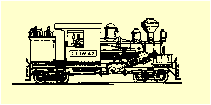 Light Railway Research Society of Australia Inc
Light Railway Research Society of Australia Inc Light Railway Research Society of Australia Inc
Light Railway Research Society of Australia Inc26 June 1999
ITINERARY
10.00AM Meet at Moore (in park) Morning tea
10.30-11.00 Drive to Pidna
11.00-11.30 Inspect beginning of tramway formation and remains of Bear Creek bridge.
11.30-12.30 Walk along tramway formation west of Highway.
12.30-1.00 Inspect area beyond end of apparent formation for any evidence of continuation.
1.00-1.30 Return to cars and drive to Yarraman State Forest Park.
1.30-2.30 Lunch and inspection of remains of retained section of Queensland Pine Company tramway formation through pine plantation.
2.30-3.00 Drive to Yarraman Station and inspect Station yard and old branch to sawmill.
3.00- End of organised tour.
PIDNA (PETER CREEK) TRAMWAY
Original prepared by Owen Betts
February 1999.
Little seems to be known of the history of this tramway but it seems that it was never operational and may never have been completed.
The District Forester in Yarraman proposed the construction of two tramways in the Yarraman area, one at Pidna and the other from the Departmental sawmill north of Benarkin to Benarkin Station.
Location surveys for both tramways were carried out and plans prepared.
Plans have not been located but she survey field books for both surveys still exist.
It is understood that the Benarkin proposal never reached construction stage.
The catalyst for the Pidna tramway proposal was the success of the Queensland Pine Company's tramway from their mill in Yarraman to their Logging activities in the rainforests north-west of the town. This line was wooden railed and worked by horse traction. It contained a switchback about halfway up the range.
Haulage from the Pidna scrubs at the time was by bullock and it was estimated that the total cost of constructing , running and maintaining a tramway was 3shillings (30cents) per 100 super feet which was two thirds that of bullock haulage
The recommended gauge was 3ft 6in with wooden rails on straight sections and steel rails on curves. Alternatively, it was suggested that the amount of steel rail could be reduced by using on curves, one wooden rail and one steel rail. This was reported to be the system used on the Yarraman Pine Company tramway and was considered satisfactory although the wear on the wooden rail was considerable.
At one stage, it was suggested that second hand steel rail would be cheaper in the long run than using wooden rails, and an approach was made to Queensland Government Railways for a price on second hand steel rails.
This approach appears to have been successful as it was reported in the Nanango News on June 11 1920 that 'steel rails have arrived at Pidna for the laying down of a tramway....'
A site adjacent to Pidna Railway Station was selected for a Forest Station where workers were to be housed and stock grazed. This location had access to permanent water, was within a mile of a school and had trains at suitable times morning and evening (presumably for schoolchildren). The site selected was gazetted as State Forest in early 1920.
Although it is known that the tramway was constructed in 1920, details on how many men were employed, where they were housed and construction time etc have not been located.
Indeed it has not been determined whether the tramway was ever used or even if rails were laid. There are no remnants of sleepers, dogspikes etc to suggest that construction ever reached that stage.
When walking along the formation one may wonder why a timber tramway was planned into such depauperate looking vegetation consisting mainly of bluegum, ironbark and box.
The reason is of course, that the traceable formation is only the first 2 kilometers or so of a tramway of about 10 kilometers surveyed into the hills covered in dense rainforest containing hoop pine and ironbark.
Almost all rainforest on private land in the area has been cleared for agriculture or grazing.
Much of the rainforest on State Forest has been converted to hoop pine plantations but there are still stands of natural rainforest with emergent hoop and ironbark to give the observer a good idea of what the original vegetation was like and why a tramway was considered.
This page is prepared and maintained for the LRRSA by Frank Stamford and copyright © by LRRSA. Last updated on 16 February 1999.
HTML by Brunel Gooch Information Systems Pty Ltd.